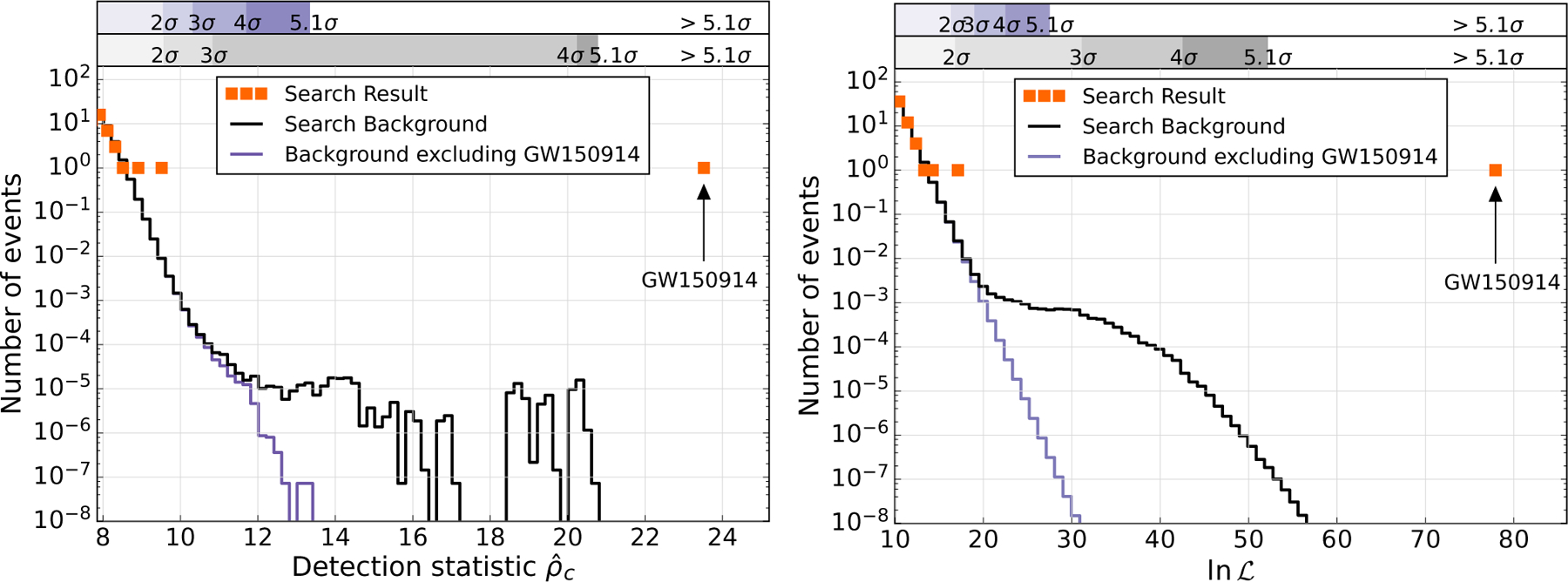FIG. 7.

Left: Search results from the PyCBC analysis. The histogram shows the number of candidate events (orange) and the number of background events due to noise in the search class where GW150914 was found (black) as a function of the search detection-statistic and with a bin width of . The significance of GW150914 is greater than 5.1 σ. The scales immediately above the histogram give the significance of an event measured against the noise backgrounds in units of Gaussian standard deviations as a function of the detection-statistic. The black background histogram shows the result of the time-shift method to estimate the noise background in the observation period. The tail in the black-line background of the binary coalescence search is due to random coincidences of GW150914 in one detector with noise in the other detector. The significance of GW150914 is measured against the upper gray scale. The purple background histogram is the background excluding coincidences involving GW150914 and it is the background to be used to assess the significance of the second loudest event; the significance of this event is measured against the upper purple scale. Right: Search results from the GstLAL analysis. The histogram shows the observed candidate events (orange) as a function of the detection statistic . The black line indicates the expected background from noise where candidate events have been included in the noise background probability density function. The purple line indicates the expected background from noise where candidate events have not been included in the noise background probability density function. The independently-implemented search methods and different background estimation method confirm the discovery of GW150914.
